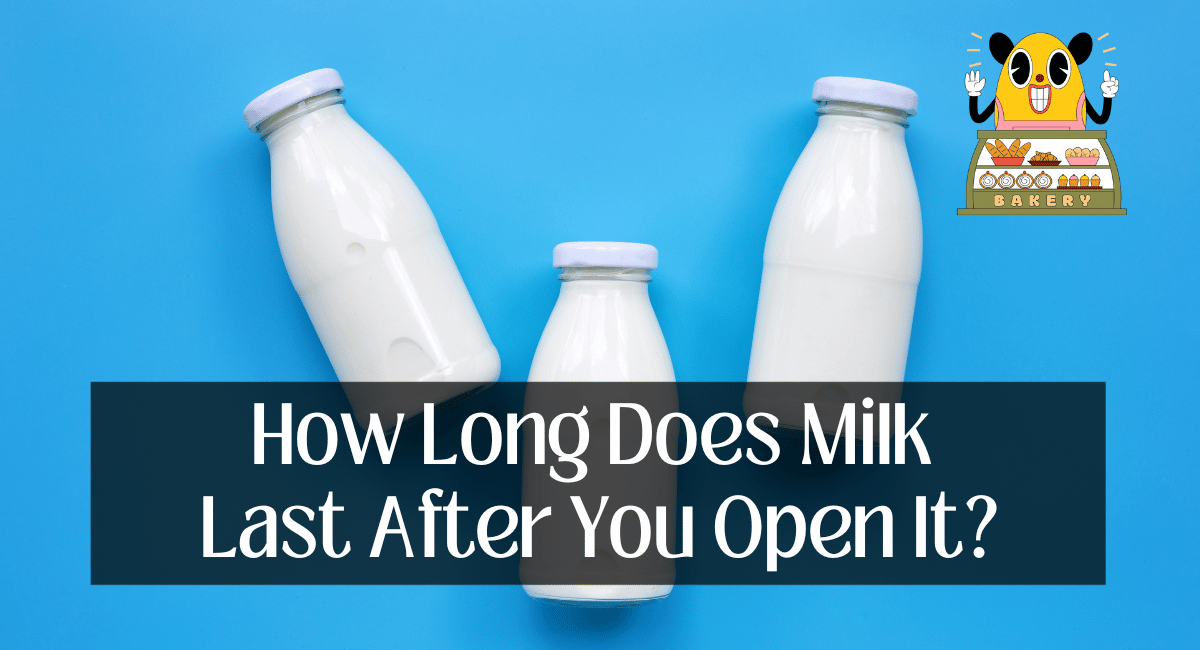A few critical aspects influence the shelf life of opened milk. Every element, from the type of milk to the storage conditions, influences how long milk is safe to consume.
Once opened, regular pasteurized, ultra-pasteurized, and non-dairy milk substitutes all have their own freshness windows. There are also rules for raw milk and canned condensed milk.
This introduction provides an overview of the various timings for ingesting opened milk products, emphasizing the significance of appropriate storage and close attention to ensuring what you pour is both enjoyable and safe.
How Long Does Milk Last After You Open It?
After opening, milk typically remains fresh for 5 to 7 days when refrigerated at or below 40 degrees Fahrenheit (4 degrees Celsius). However, the precise time period can vary depending on variables such as temperature fluctuations and milk fat content. Always inspect food for symptoms of spoilage prior to consumption.
Different Types Of Milk
After a container of milk has been opened, its shelf life primarily depends on factors such as temperature, storage conditions, and milk type. Here are some general guidelines for milk of numerous types:
Regular Pasteurized Milk
After being opened, regular pasteurized milk can typically be stored in the refrigerator at temperatures of 38 degrees Fahrenheit (3.3 degrees Celsius) or lower for around five to seven days before becoming unsafe to ingest.
Ultra-Pasteurized Milk
Ultra-pasteurized milk has a longer shelf life because it is heated to a higher temperature than standard pasteurized milk. Standard pasteurized milk is stored at room temperature.
When kept in a refrigerator at temperatures of 38 degrees Fahrenheit (3.3 degrees Celsius) or lower, ultra-pasteurized milk has a shelf life of around 7-10 days after it has been opened.
Raw Milk
Since raw milk has not been subjected to the pasteurization process, it should be used relatively promptly after opening, typically within 3-5 days.
This is because the process of pasteurization eliminates potentially hazardous germs. Raw milk should be stored in temperatures of 38 degrees Fahrenheit or lower (3.3 degrees Celsius).
Non-Dairy Milk
The shelf life of non-dairy milk substitutes like almond milk, soy milk, and oat milk is typically between seven and ten days after opening when they are kept in the refrigerator at the conditions recommended by the manufacturer.
Condensed Milk In A Can
Once the can of condensed milk has been opened, it can be stored in the refrigerator for anywhere between five and seven days before going bad.
Before placing anything in the refrigerator, you must first ensure that any leftovers have been placed in an airtight container.
How To Recognize Spoiled Milk
While the 7-day guideline is the most well-known milk-expiry reference, it is sadly arbitrary in many circumstances.
This is because milk can go bad even after a day or two if it has been tainted after being opened. Other times, the milk can technically be consumed 7 days after it was opened.
This is why you should always add more security to the 7-day rule by trusting your instincts.
Here are some of the most common indicators of milk spoilage
Unpleasant Or Sour Odor: It’s usually a good idea to sniff your milk before drinking it, especially if it’s been open for a few days. Fresh milk does not have a unique scent other than the traditional “milky” smell. I don’t recommend taking a chance if you smell something fishy or if something makes you cringe.
Curdling: Curdling occurs when milk is left for an extended period of time and turns sour. The acidity causes milk proteins to curdle or form lumps, which subsequently float to the surface. Other than being smooth or creamy, milk should have no texture. Throw it out if you observe curdling or tiny lumps.
Solid Residue: Similar to curdling, the solid lumps are located at the bottom or on the container’s sides.
Yellowish Color: Milk should be a clear white tint, not yellowish. If it appears to be more yellow than white, it has most certainly gone bad.
It Was Left Outside The Refrigerator: Milk should not be left out at room temperature for more than two hours. If the temperature outside is 90 degrees Fahrenheit or higher, that time is cut in half to one hour. This is because the bacteria found in milk are mesophilic or thrive quickly at room temperature. The longer milk is exposed to these temperatures, the faster bacteria can proliferate and damage the milk.
What Causes Milk To Go Bad?
The growth of parasites, bacteria, and/or fungi is the most common cause of milk deterioration.
These microorganisms digest milk components, resulting in byproducts. These byproducts alter the texture, taste, appearance, and smell of milk (the same characteristics we stated above to look for when judging poor milk).
Where do these germs originate? You’d be astonished to learn that these bacteria have always been present, and milk wouldn’t be milk without them.
While there are methods to remove or at least slow the growth of bacteria in our milk (such as pasteurization), our milk will never be completely sterile. This is due to the procedure of transporting milk from a cow to our house.
This is how the procedure works
The cow is first milked. The milk is cooled and stored in a refrigerated tank to restrict the growth of bacteria.
After that, the milk is delivered to a processing plant where it is pasteurized, homogenized, and packed before being sold to the grocery store.
While the entire procedure does an excellent job of reducing and suppressing the growth of bacteria and other organisms, it will never be flawless. Any microscopic germs or bacteria that make their way into the milk eventually break it down, causing it to deteriorate over time.
The good news is that spoiling is a game of numbers. Even if germs are floating in your milk, limiting the bacterial count to a low (suitable for human consumption) is safe.
Thanks for reading. I hope you find it helpful.

